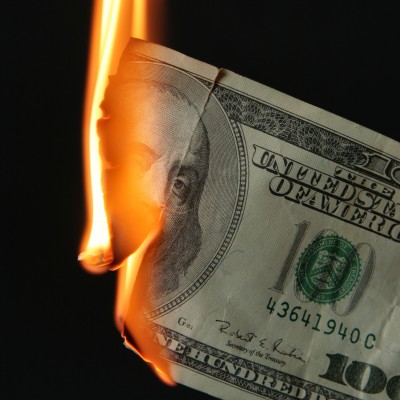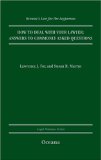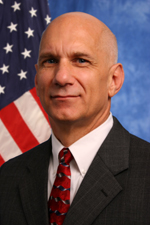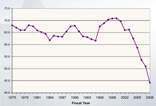
As the 44th President of the United States, Barack Obama will face many great challenges at home and abroad. Tech will not necessarily be in the top three items on his to-do list and it will be difficult to say what programs will actually receive funding in the end. However, the administration’s policies on Technology give us a glimpse of things we might see.
Improve America’s Competitiveness
- Promote American Businesses Abroad: Barack Obama and Joe Biden support a trade policy that ensures our goods and services are treated fairly in foreign markets. President Bush has failed to address the fact that China has engaged in ongoing currency manipulation that undercuts US exports; that China fails to enforce U.S. copyrights and trademarks and that some of our competitors create regulatory and tax barriers to the delivery and sale of technology goods and services abroad. Barack Obama will fight for fair treatment of our companies abroad.
- Invest in the Sciences: Barack Obama and Joe Biden support doubling federal funding for basic research over ten years, changing the posture of our federal government from being one of the most anti-science administrations in American history to one that embraces science and technology. This will foster home-grown innovation, help ensure the competitiveness of US technology-based businesses, and ensure that 21st century jobs can and will grow in America.
- Invest in University-Based Research: Barack Obama and Joe Biden strongly support expanding research initiatives at American colleges and universities. The U.S. faces a challenge in funding younger researchers. Obama and Biden will provide new research grants to the most outstanding early-career researchers in the country.
- Make the R&D Tax Credit Permanent: Barack Obama wants investments in a skilled research and development workforce and technology infrastructure to be supported here in America so that American workers and communities will benefit. Obama and Biden want to make the Research and Development tax credit permanent so that firms can rely on it when making decisions to invest in domestic R&D over multi-year timeframes.
- Ensure Competitive Markets: Barack Obama believes we need a business and regulatory landscape in which entrepreneurs and small businesses can thrive, start-ups can launch, and all enterprises can compete effectively while investors and consumers are protected against bad actors that cross the line. As president, Obama and Biden will reinvigorate antitrust enforcement, which is how we ensure that capitalism works for consumers.
- Protect American Intellectual Property Abroad: The Motion Picture Association of America estimates that in 2005, more than nine of every 10 DVDs sold in China were illegal copies. The U.S. Trade Representative said 80 percent of all counterfeit products seized at U.S. borders still come from China. Barack Obama and Joe Biden will work to ensure intellectual property is protected in foreign markets, and promote greater cooperation on international standards that allow our technologies to compete everywhere.
- Protect American Intellectual Property at Home: Intellectual property is to the digital age what physical goods were to the industrial age. Barack Obama believes we need to update and reform our copyright and patent systems to promote civic discourse, innovation and investment while ensuring that intellectual property owners are fairly treated.
- Reform the Patent System: A system that produces timely, high-quality patents is essential for global competitiveness in the 21st century. By improving predictability and clarity in our patent system, we will help foster an environment that encourages innovation. Giving the Patent and Trademark Office (PTO) the resources to improve patent quality and opening up the patent process to citizen review will reduce the uncertainty and wasteful litigation that is currently a significant drag on innovation. As president, Barack Obama will ensure that our patent laws protect legitimate rights while not stifling innovation and collaboration.
- Restore Scientific Integrity to the White House: Good policy in Washington depends on sound advice from the nation’s scientists and engineers and decision-making based on the needs of all Americans. Obama and Biden will restore the basic principle that government decisions should be based on the best-available, scientifically-valid evidence and not on the ideological predispositions of agency officials or political appointees.
See also: A Second Look at President-Elect Obama’s Technology Platform (Patent Docs)

 In a spate of recent articles, it would seem that the world has come to an end in terms of high-tech IPOs — not to mention venture backing of early-stage start-ups. Because of the recent market turmoil, the M&A market has has come to a screeching halt and the window of opportunity for IPOs has shut completely. Even angel investors are rethinking investment moves.
In a spate of recent articles, it would seem that the world has come to an end in terms of high-tech IPOs — not to mention venture backing of early-stage start-ups. Because of the recent market turmoil, the M&A market has has come to a screeching halt and the window of opportunity for IPOs has shut completely. Even angel investors are rethinking investment moves.
 John J. Doll, Commissioner for Patents, US Patent & Trademark Office, talked today at the BIO Intellectual Property Counsel Committee’s
John J. Doll, Commissioner for Patents, US Patent & Trademark Office, talked today at the BIO Intellectual Property Counsel Committee’s 